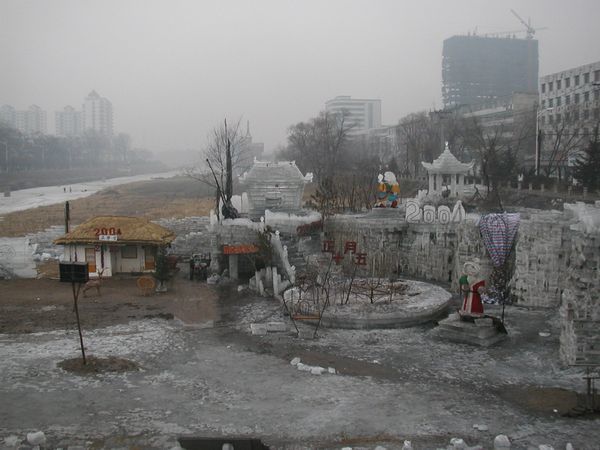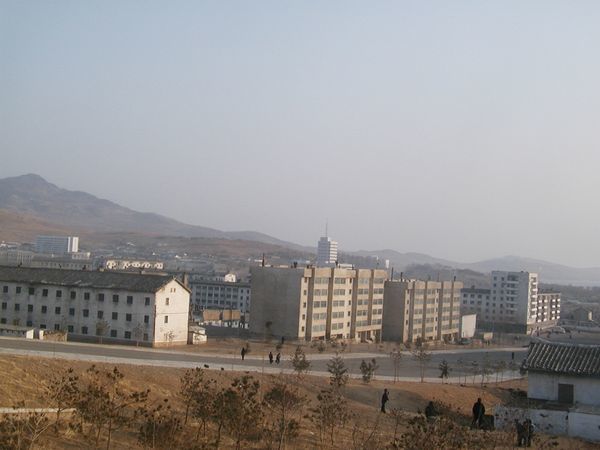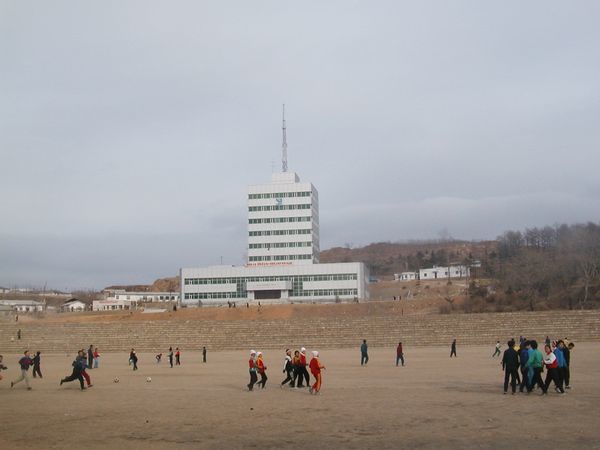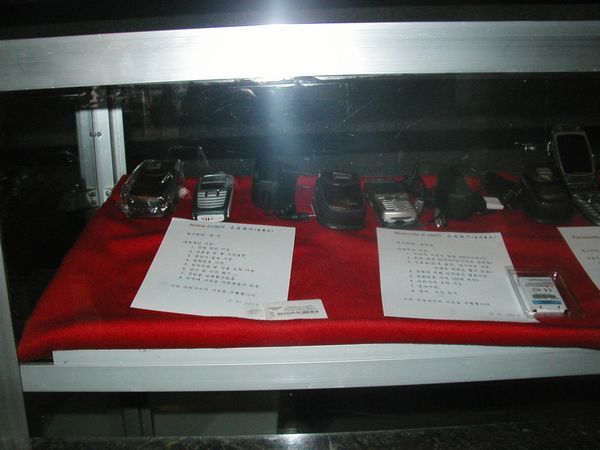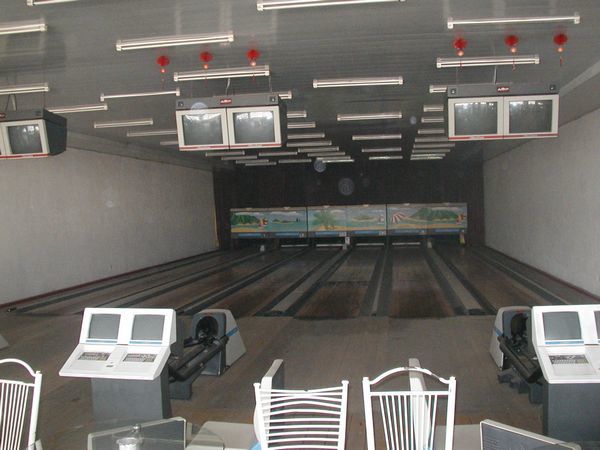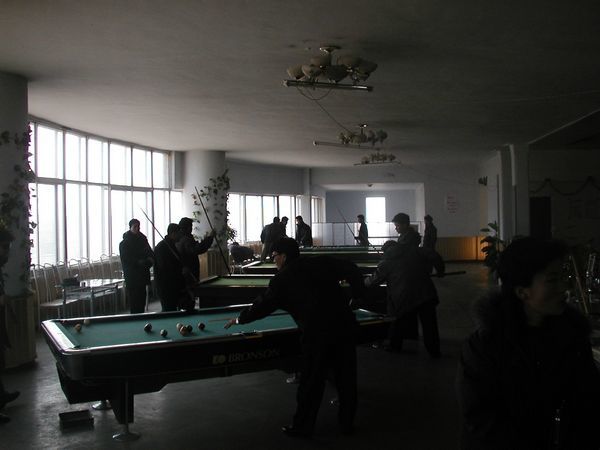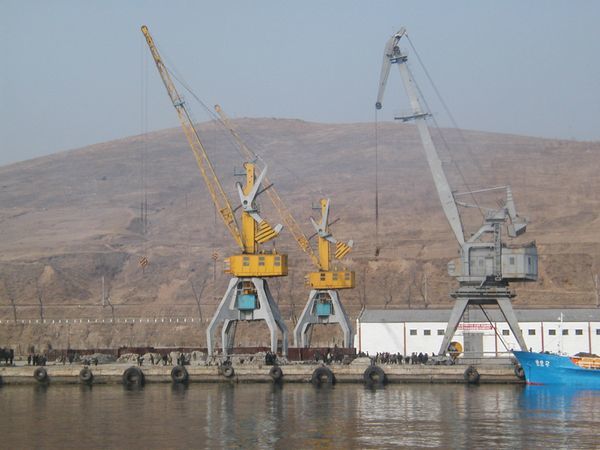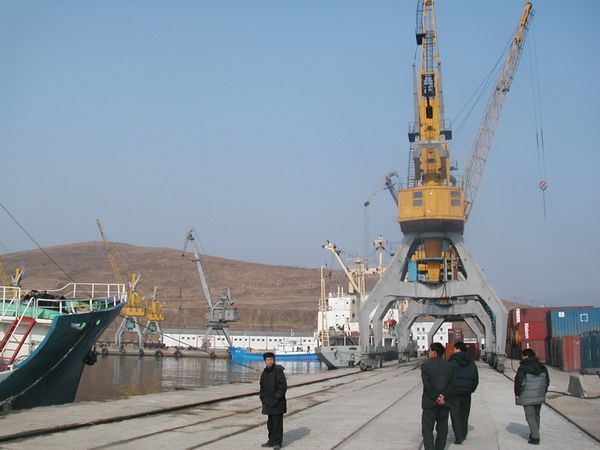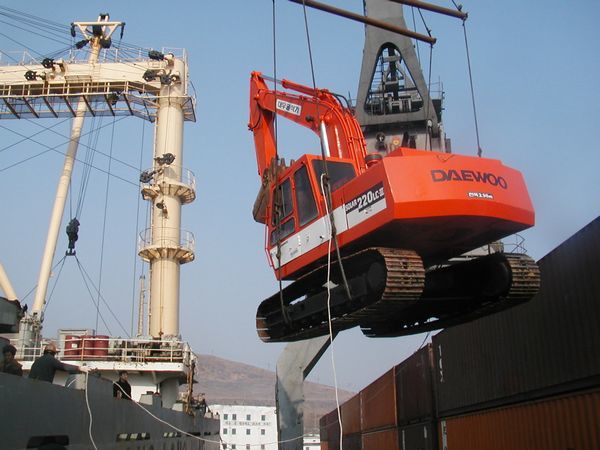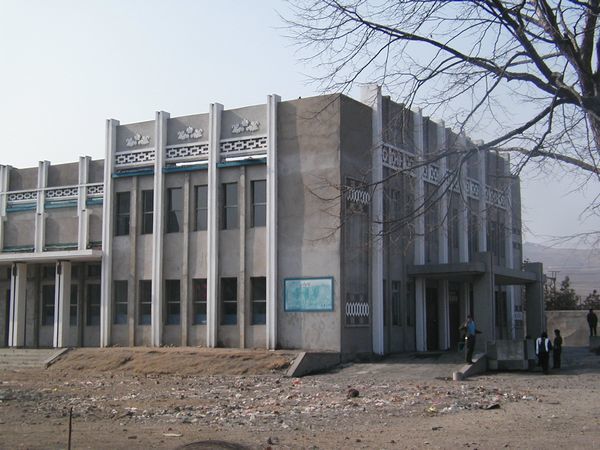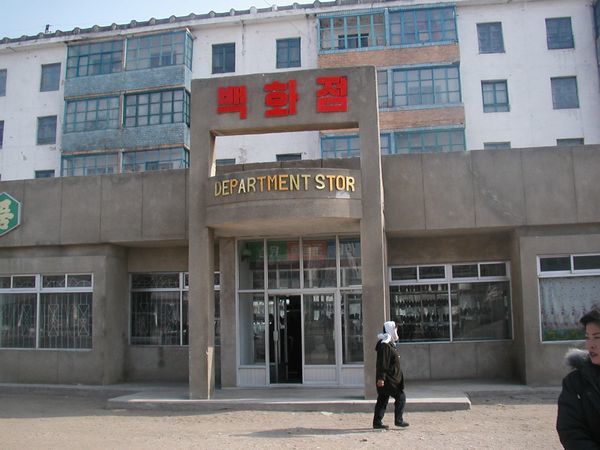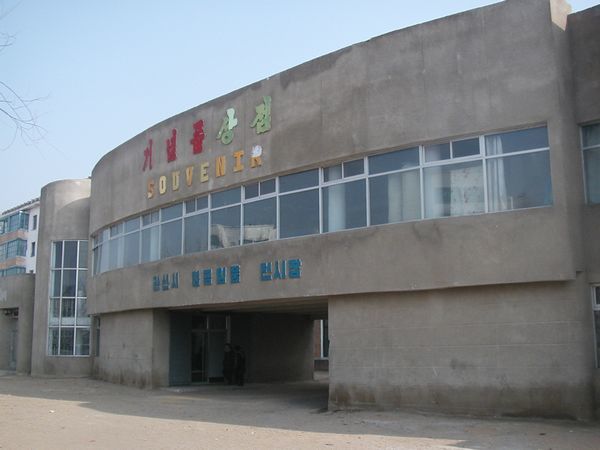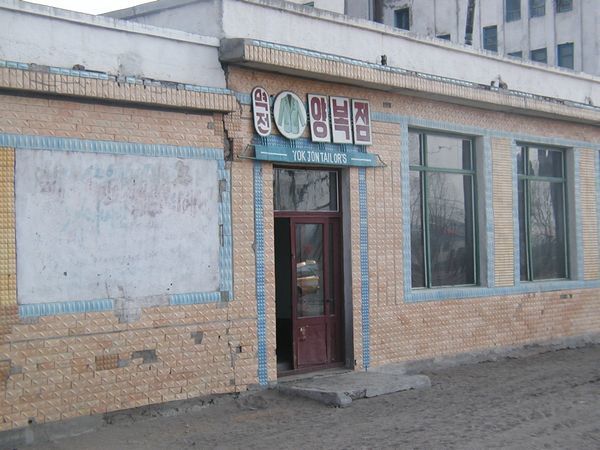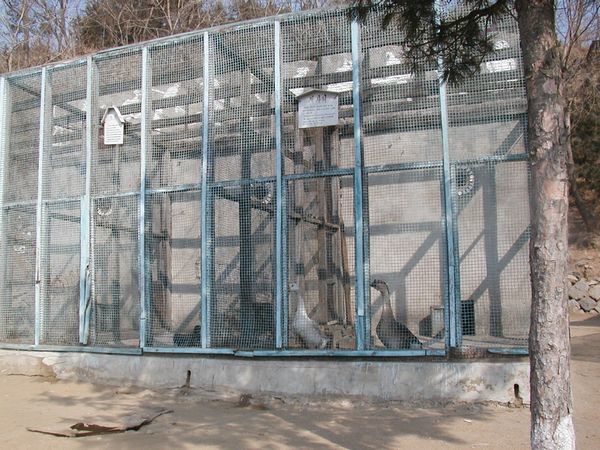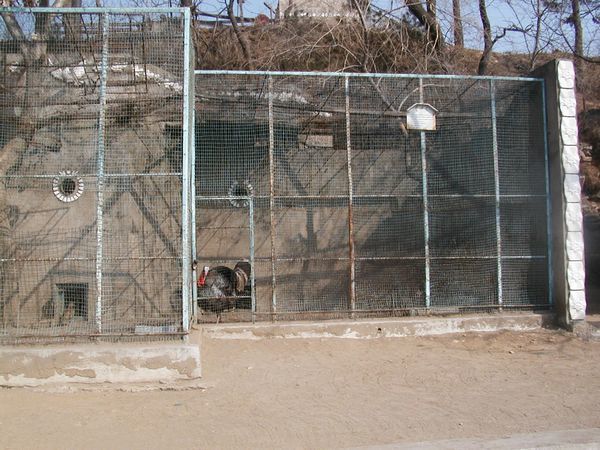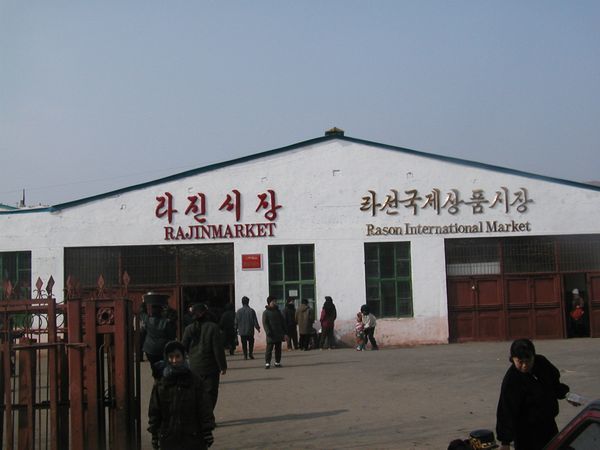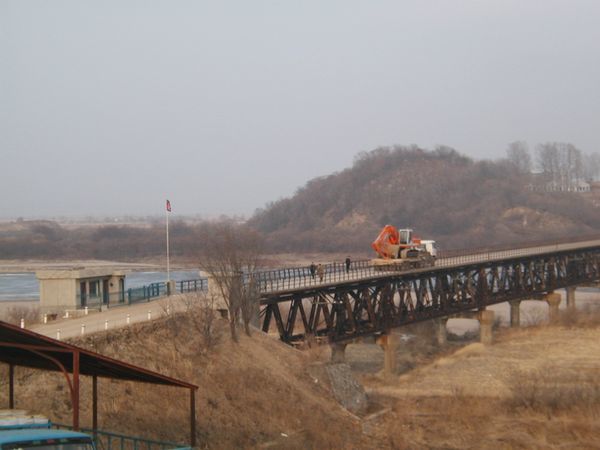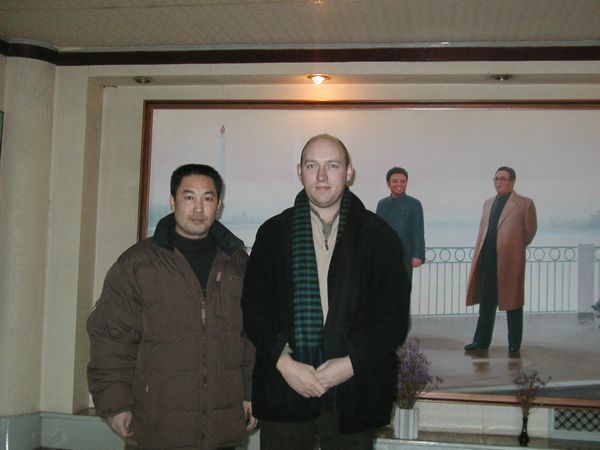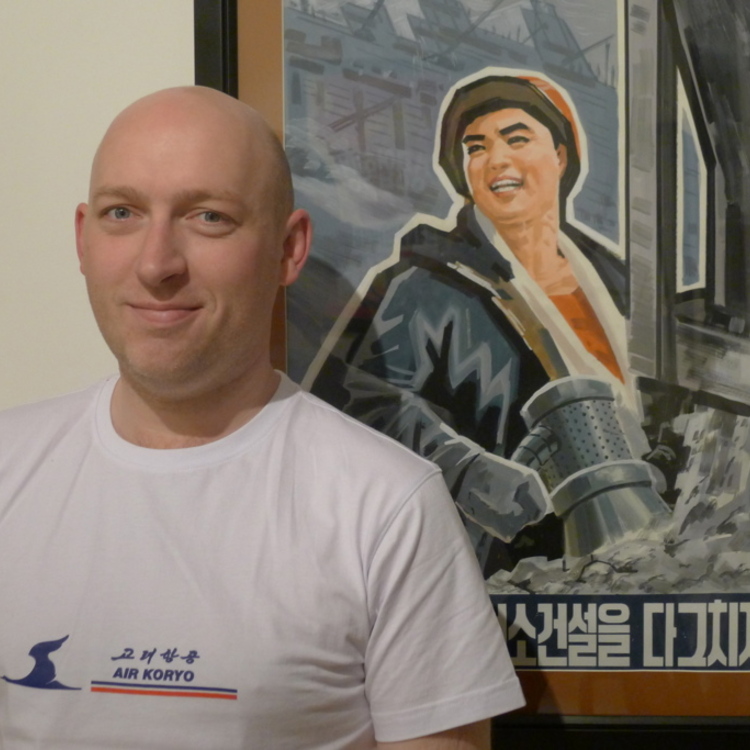Throwback to a winter adventure!
First trip to Rason – Feb 2004
Written by Simon Cockerell
Back in early 2004 I had been working at Koryo Tours for less than 2 years, still finding my feet for sure and as we had just been through the SARS-induced border closure (echoes of the situation we are in at the time of writing!).
While I was doing my best to visit as much of the DPRK as was available at the time I was intrigued by the remote and little-mentioned little triangle at the very top of the country, Rajin-Sonbong as it was often referred to at the time (although the conglomerate term Rason was also in use then).
Friends in Pyongyang had little insight about the area, just the standard line really, I only knew a couple of people who had been there even, so I decided to head off on a test run, a recce trip…in winter, to a place very far north. Perhaps I could have waited for a better time of year, but I was young and impatient, so off I went!
First, I flew to Yanji, in Jilin Province. While Yanji has a handful of nice and interesting places to stay (on subsequent trips I have usually used the DPRK-run Ryugyong Hotel, not that Ryugyong Hotel, a much simpler and less triangular version) this time I stayed in the Post and Telecommunications Hotel, a basic place but good and central enough, tbh my main memory of this place is not being able to sleep and staying up far too late while watching Copland in Chinese on one of the local channels.
I spent a day roaming Yanji on foot, it is a heavily Korean city (Chinese-Koreans are one of the major nationalities within China) and this was reflected in the main language on street signs, buildings, adverts, (and, yes, dog meat markets) – it was freezing cold, overcast, and grim. Still had a great time though and would recommend Yanji as a fascinating place worthy of any curious visitor, it is nicer in summer though for sure!
In the morning I met the guy who would take me to Rason, a North Korean, let’s call him Mr. Jun. He spoke Chinese very well, I spoke Chinese very crappily, we made it work somehow.
Driving from Yanji to the Wonjong Bridge crossing into Rason took a couple of hours, pleasant enough roads and I even got my first glimpse of the flame atop the Wangjaesan Grand Monument which pokes out above the mountains on the Korean side of the Tumen River, the boundary between PRC and DPRK.
At the border-post Chinese customs were efficient enough, it was a quiet place though, with almost nobody there at all, I wondered if this was always what it was like here. A minibus then took me across Wonjong Bridge and over to the DPRK side, Mr Jun helping to smooth the way and we did have to jump the line a bit as the processing time for the rows of Chinese trucks entering Rason seemed to be taking quite a while.
I handed over my mobile phone for safekeeping (those days cell phones were not allowed to be taken into the country at all) and met the local guide, a fluent English speaker and very helpful lady, Ms. Chang – off we went into Rason to see what it was like and what there was to experience.
What followed over the next few days was partly ‘normal’ tourism – we visited a farmhouse and fisherman’s’ house that had been visited by Kim Il Sung, the Sonbong Revolutionary Site (where Kim Jong Suk had returned to Korea and where a post-Japanese administration had been set up), a schoolchildren’s performance, the Rajin Kimilsungia Hothouse, Scenic Pipha Island, and quite a lot more.
We tried out a few hotels including the central Namsan Hotel (perfect location), Sonbong Hotel (not amazing, but hot water here was most welcome given the temperature at the time!), and Rajin Hotel (classically North Korean, lots of cold grey stone on the inside, I liked it).
A quick note on the name of the area; Rason. This is a portmanteau of the names of the two main cities here; Rajin, and Sonbong. Combine them and what do you have? Rajin-Sonbong, the initial name used. But then combine them a bit more efficiently and what do you have? Rason – the name used collectively, although both Rajin and Sonbong are distinct places.
It can be a bit confusing but this is not unique to this area after all the now-world-famous Chinese city of Wuhan gets its name from the meeting of three cities that merged together; Wuchang, Hankou, and Hanyang.
Some highlights and most memorable moments of the Rason 2004 trip:
• Mobile Phones – Rason is where experimentation takes place in the DPRK, the first place to have a legal open market, a place with a different financial system, and so on. Here also the radical new-fangled technology of portable telephones was being introduced, with help from the Thai company Loxley Telecoms.
The Loxley Building (a copy of their HQ in Bangkok) stood overlooking the simple Rajin Stadium, this was the only place in the DPRK where you could buy cell phones, we checked out options and were put off both by the fact that they were not available to foreigners, and that it cost 320 EUR (in 2004!) for the basic Nokia. I didn’t see a single person using a mobile the whole time I was in Rason. Of course, the situation with mobile phones has changed quite a lot in the DPRK since then.
• Leisure activities – After being told that people in Rason were better off than many others in the DPRK I wanted to know what they did with their free time, so I was taken to a small leisure centre, as it was winter it was mostly closed but there was a manifestly little-used ten pin bowling alley (quite dusty), and a much more bustling billiard hall, which was dark and cold, full of men wearing very heavy coats and thus struggling with the flexibility needed for some shots, and one guy even wearing sunglasses, perhaps to challenge himself a bit more.
I stayed for a couple of games against these chaps who were having a lunch made up mostly of strong booze and cigarettes. A simple place but I remember it well as a good bit of fun and a 'Welcome to Rason' moment.
• Rajin Port - I was warned that I may not be allowed in here, but in the end it was no problem. I have been here several times since and it has expanded and been upgraded, parts of the port leased to Chinese and Russian interests too.
Rajin Port remains largely the same to the untrained eye but certainly looking back at photos it was a little more basic and rundown in 2004. I had somewhat free-reign to wander around and take photos, which was interesting as there was definitely some slightly unorthodox activity going on here amongst all the parked ships from the local fishing fleet and some larger Russian vessels sheltering in the ice-free port.
I came across a ship unloading cars onto the dock, they were clearly from Japan (no license plates, but right-hand drive), I asked about them and was told they were “tax-free imports from compatriots”, a euphemism I have always remembered and invoked a few times myself. Then while taking pictures of the small row of cranes I was shouted at to move as a brand-new Daewoo digger was hoisted off another ship and dropped on the dock.
I asked about this and was told it was a gift from South Korea, I wasn’t sure how this had happened logistically but it did seem as if there was some NK/SK trade going on as a few lorries loaded with timber from China were also being worked on and I was informed that this was a kind of way-point for wood from China to be shipped to South Korea, somehow.
• Central Rajin – You can read online about how the rules in Rason are different from other parts of the DPRK, that foreigners can roam freely. This is not really true though and never has been. These days there are a lot of Chinese businesses here and those who work there can drive themselves around and so on, Russians who work at the port can be seen also, but tourists are never really allowed out on their own regardless of what the rules are.
Regulations here can be bent a lot further than the same rules in PY though and there is a larger grey area (visit there with Koryo Tours, we will show you how this is done!), so I went for a long walk with Ms. Chang, past the lovely train station (now renovated, as it was a Japanese-era building), the Golden Triangle Bank (since moved but still open, this was the first place foreigners could legally exchange for DPRK currency at the market rate),
Then down a street where many shops had English signs – now in today's Rason there are many modern places with Chinese signs, parts of the city in fact just look like parts of Yanji (good thing or bad thing? Well they are better than the other buildings, but they do look horribly generic to anyone who has spent time in China).
These tailor shops, souvenir shops, etc were basically part of the plan for Rason to be a bit more international.
Sadly undermined by grim weather, a street made mainly of dirt (it is paved now), and spelling errors, this was a fun place to walk around though, nothing like anything I had seen or experienced in Pyongyang or the other parts of the DPRK I had been to previously.
• The Zoo – this was very much not a highlight but is worth mentioning. Thankfully it was closed and demolished a couple of years later. We actually stumbled across it while parking to go to the Rajin Hotel (there is a small casino instead of the zoo now), Ms. Chang claimed never to have visited, and this is quite possibly true, it was made up of just 5 cages, no entry fee or anyone seeming to work there.
The cages contained geese, a turkey, a picture of a monkey, and some bears, one of which had only one arm. Then a cow tied to a fence, which may or may not have been part of the zoo. It sucked, and although I understand the claim that zoos are innately exploitative, I still have enjoyed a number of them around the world, this one though, no thanks.
• Rason Market – the first of its kind in the DPRK, at this time the Tongil Market in Pyongyang was not yet open and still under construction (some footage of it being built can be seen in the Koryo Tours co-produced documentary A State of Mind, shot during 2003). This was considered a brave experiment in market economics; a place where traders could profit in the gap between wholesale and retail, where customers could look for the best deals, all these things so familiar to many of us but which were about to become legitimised in this area.
These days the Rason Market is a much larger place, several buildings in the Chinese market-style bustling with locals and visitors, still with foolish photo restrictions though (people selling things is not anything to be sensitive about, still we don’t make the rules!).
I was allowed in and spent a fascinating hour or two here, no photos allowed (although my camera somehow took one of the entrance, not sure how that happened!) – as you may expect it was mostly Chinese goods on sale, plus a few folks selling vegetables, kimchi, meat, alcohol etc. It was in many ways just a simple market experience, but the fact that it was in North Korea, and the only place in North Korea I could possibly see and experience such a thing, made it very memorable and special.
I did buy a couple of notepads and cheap items here and have since bought all manner of silly stuff in the successor to this market (eg: this farmhouse fireplace) but the first time is most memorable, and this was honestly worth all the effort of the journey to see what many hoped would be a large part of the future of the country.
All things must pass, and after 3 days and nights in Rason, it was time to head back to China.
Since that visit more options have opened up for leaving Rason, and many of my return journeys have involved being the guinea pig for such experiments to test viability for foreign tourists; crossing from Rason to Russia by rail, travelling from Rason down to Chongjin and Mt. Chilbo, arriving in Rason by local train from Pyongyang, entering Rason after crossing into the DPRK at the Tumen/Namyang border instead of the Rason border.
These have all been highlights of my many visits to North Korea, but the first Rason trip was the special one!
As I passed through DPRK customs again, waiting while large numbers of Chinese casino tourists incoming for a bit of fun at the Emperor Hotel (another place I visited, and lost $10 immediately at blackjack, normally my game!) I looked out at the Wonjong Bridge I was about to cross, and there was the very same brand new Daewoo digger I had almost been crushed by a couple of days earlier at the port, being transported slowly across the bridge into China.
I pointed it out to Mr Jun and asked why this generous gift from South Korea would be on its way to a third country so quickly. He frankly and honestly pointed out that a brand-new digger is worth quite a lot, and it could be sold in China for a hefty amount, and that a second-hand digger could then be purchased with just a fraction of the money gained.
A simple calculation of course, and one expressed in an unusually-frank way for being in the DPRK, but that was Rason; the frontline of economic experimentation in the DPRK, a place where even gifts can be leveraged and sold for a profit.
I wonder what Ms Chang did with the bottle of whisky I gave her!
